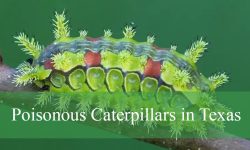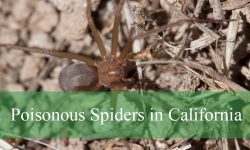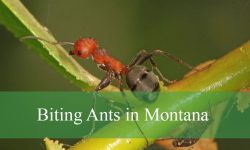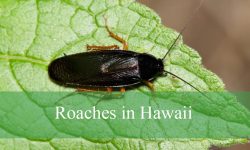Minnesota’s natural beauty is home to countless fascinating creatures — but among them are several bugs that can cause harm. From biting insects in humid forests to venomous spiders hiding indoors, the state has its fair share of tiny threats that everyone should know about.
During the warm months, ticks, mosquitoes, and stinging insects become especially active across Minnesota’s lakes, trails, and backyards. While most are harmless, a few can spread diseases, trigger allergic reactions, or deliver painful bites that require medical care.
Learning to identify these dangerous bugs is the first step to preventing problems. This guide covers 23 types of dangerous bugs in Minnesota, how to recognize them, and what you can do to protect yourself and your home all year long.
Types of Dangerous Bugs Found in Minnesota
Deer Tick (Ixodes scapularis)
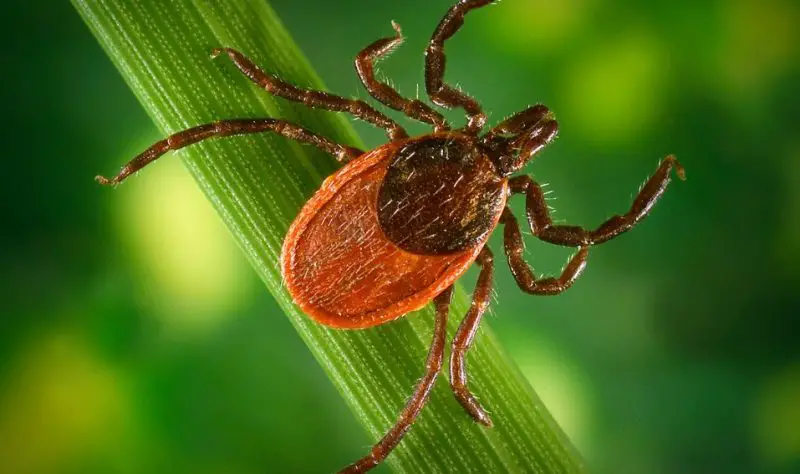
The Deer Tick, also called the Black-legged Tick, is a small parasitic arachnid notorious for transmitting Lyme disease in Minnesota. Adult females are about 3 millimeters long and have a reddish-brown body with a dark, shield-like scutum near the head, while males are smaller and uniformly dark. Nymphs and larvae are even tinier, often resembling specks of dirt, which makes them difficult to detect after they latch onto a host.
These ticks thrive in humid, shaded environments such as wooded trails, tall grasses, and leaf litter. They are not capable of jumping or flying; instead, they wait on vegetation and attach to passing animals or humans. Once attached, they feed on blood for several days, gradually swelling in size and increasing the risk of disease transmission. Their bites are painless, allowing them to go unnoticed for hours or even days.
Deer Ticks are most active in the spring and fall, when both adults and nymphs seek hosts. Nymphs are particularly dangerous because of their small size and high infection rates. Infected ticks can transmit not only Lyme disease but also anaplasmosis and babesiosis.
In Minnesota, these ticks are most commonly found in the central and southeastern regions, especially in forested areas with dense undergrowth. People who hike, camp, or own pets in rural or wooded locations face the highest risk of exposure. Proper tick prevention measures, such as using repellents and performing body checks after outdoor activities, are essential for safety.
Mosquito (Culex and Aedes species)
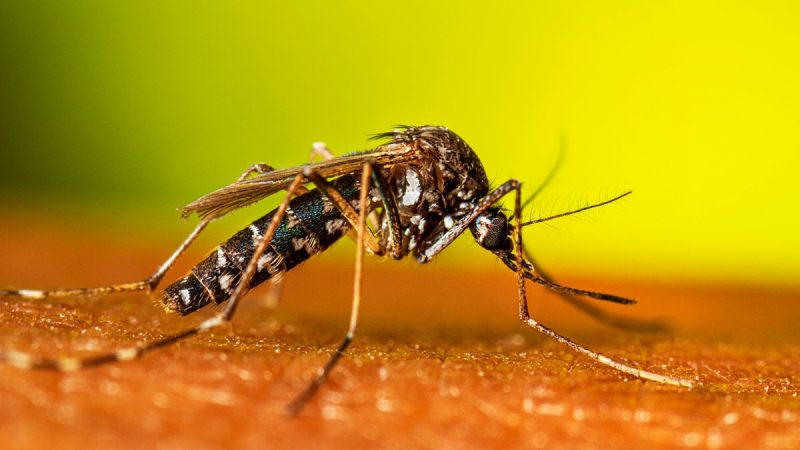
Mosquitoes are among Minnesota’s most widespread and troublesome insects, especially during the warm, humid months of summer. The state is home to multiple species, including Culex and Aedes, both capable of transmitting diseases like West Nile virus and La Crosse encephalitis. Adult mosquitoes typically measure between 3 to 6 millimeters in length, with long, slender legs and a distinctive proboscis used for piercing skin and feeding on blood.
Culex mosquitoes are generally brownish with rounded abdomens and prefer to bite during dusk and nighttime hours. Aedes mosquitoes, such as the Aedes vexans, are more aggressive daytime biters and can be identified by their black bodies marked with white stripes. Females of both genera require blood meals to develop eggs, while males feed only on plant nectar.
These insects thrive in areas with abundant standing water, such as ponds, birdbaths, gutters, and wetlands. Their larvae, commonly called wrigglers, develop underwater before emerging as adults within days. Mosquito populations explode after rainfall or flooding, especially in Minnesota’s lake regions. Their bites cause red, itchy welts and, in sensitive individuals, can trigger allergic reactions.
The greatest mosquito activity in Minnesota occurs from late May through September, particularly around dawn and dusk. Residents in rural or suburban regions surrounded by vegetation and water sources face the highest mosquito pressure. Wearing protective clothing, using repellents containing DEET or picaridin, and eliminating standing water are vital measures to reduce mosquito-related health risks.
Brown Recluse Spider (Loxosceles reclusa)
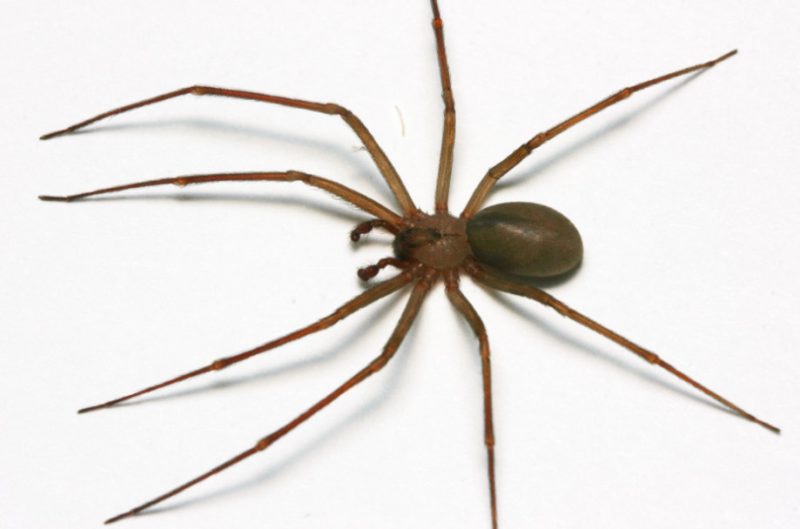
The Brown Recluse Spider is a venomous species known for its distinctive violin-shaped marking on its back, just behind the eyes. Adults range from 6 to 20 millimeters in body length, with long, delicate legs and a uniform brown or tan coloration. Unlike many spiders, the brown recluse has only six eyes arranged in pairs, which helps in its identification. Although rare in Minnesota, isolated cases occur when these spiders are accidentally transported inside goods or vehicles.
They are nocturnal hunters that prefer secluded, dry, and undisturbed environments such as basements, attics, storage boxes, or closets. During the day, they hide in cracks, under furniture, or inside clothing piles. Despite their reclusive nature, they will bite in self-defense when pressed against the skin or disturbed. The venom contains necrotic compounds that destroy tissue, often resulting in painful, ulcerated wounds.
The severity of a brown recluse bite varies, but symptoms can include intense pain, itching, blistering, and, in severe cases, tissue necrosis that may take weeks to heal. While fatalities are rare, untreated bites can lead to serious infections and systemic reactions, particularly in children or those with weakened immune systems. Immediate medical care is essential following any suspected bite.
In Minnesota, brown recluse sightings are infrequent and typically limited to heated indoor environments, especially in southern parts of the state. They cannot survive prolonged exposure to freezing temperatures outdoors. Maintaining clean, clutter-free spaces and sealing entry points in homes can greatly reduce the risk of unwanted encounters.
Black Widow Spider (Latrodectus variolus)
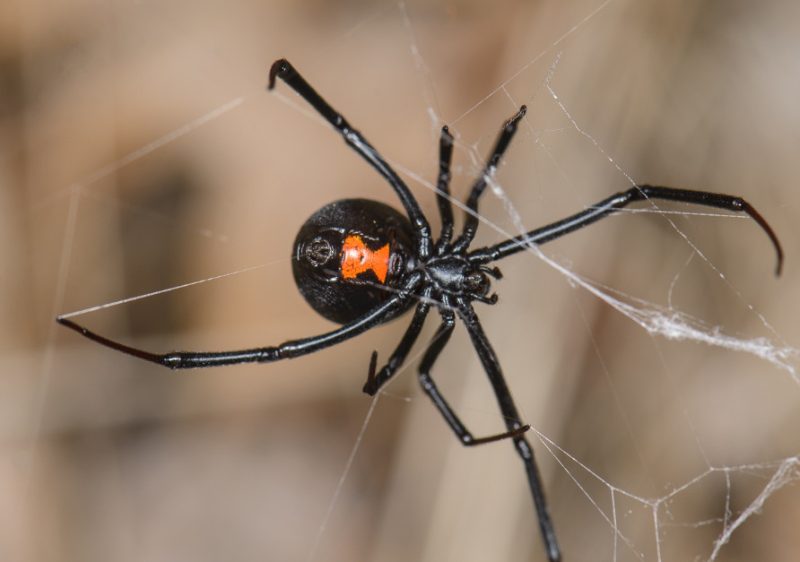
The Northern Black Widow, Latrodectus variolus, is one of Minnesota’s most venomous arachnids, recognized by its glossy black body and red hourglass marking on the underside of its abdomen. Adult females measure about 1.5 centimeters in body length, while males are much smaller and less dangerous. Their round, shiny appearance and irregular webs in dark corners are telltale signs of their presence.
Black Widows prefer quiet, sheltered environments such as woodpiles, sheds, garages, and under rocks. They are generally non-aggressive and bite only when threatened or accidentally pressed against the skin. The venom they inject is a potent neurotoxin that affects the nervous system, causing symptoms like muscle cramps, nausea, sweating, and chest or abdominal pain. Severe reactions may require medical treatment but are rarely fatal.
Their webs are irregular and tangled, designed to trap insects, small arthropods, and occasionally other spiders. Females tend to remain in their webs most of the time, while males wander in search of mates. After mating, the female may produce multiple egg sacs, each containing hundreds of spiderlings that disperse within weeks.
In Minnesota, Black Widows are found primarily in the southern and central regions, where temperatures are milder. They tend to inhabit outdoor structures, especially those left undisturbed. To minimize risk, people working in barns, basements, or outdoor sheds should wear gloves and inspect dark corners before reaching inside.
Bald-Faced Hornet (Dolichovespula maculata)
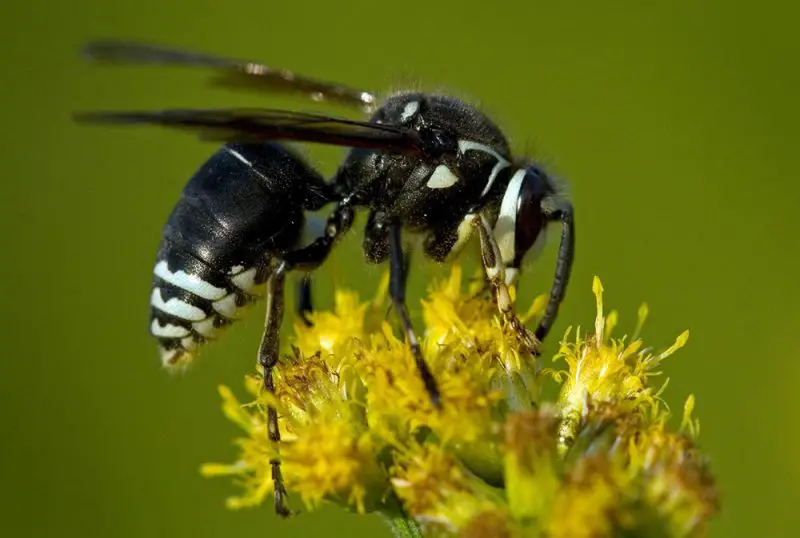
The Bald-Faced Hornet is a large, black-and-white wasp that can grow up to 20 millimeters long, with a distinctive white face and pale markings on its abdomen. Despite its name, it is not a true hornet but a type of aerial yellowjacket. These hornets are known for their imposing paper nests, often built high in trees, shrubs, or on structures, sometimes reaching the size of a basketball.
They are highly social insects that defend their colony aggressively when threatened. The sting of a Bald-Faced Hornet is extremely painful and can be delivered multiple times, unlike bees that lose their stinger. Their venom contains compounds that cause swelling, redness, and burning sensations. For individuals allergic to insect stings, a single encounter can trigger life-threatening anaphylactic reactions.
Bald-Faced Hornets are active during the warm months, with peak activity from late summer through early fall. During this period, food scarcity makes them more defensive as they protect their queen and brood. They primarily feed on other insects, nectar, and fruit juices, playing a beneficial role in natural pest control.
In Minnesota, these wasps are widespread in forests, suburban yards, and rural landscapes. Their nests are often seen hanging from tree branches or under eaves. Removing a nest should only be done by professionals, as disturbing it can provoke a swarm attack. Staying cautious around large gray paper nests and avoiding sudden movements can prevent painful stings.
Paper Wasp (Polistes fuscatus)
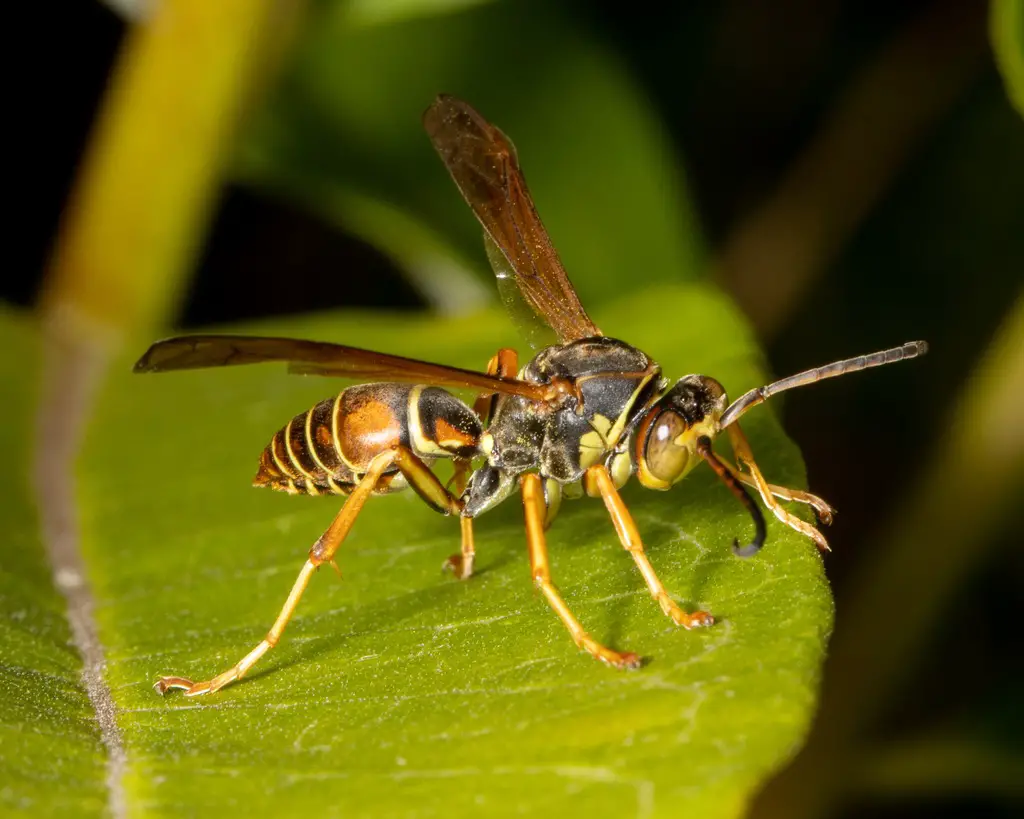
The Paper Wasp, Polistes fuscatus, is a slender, long-legged wasp recognized for its reddish-brown body marked with yellow stripes. Adults typically measure between 1.5 to 2 centimeters in length. Their narrow waist and dangling legs during flight make them easily distinguishable from other wasps. They are most active during the warmer months in Minnesota and are frequently seen hovering around eaves, sheds, or decks where they build their characteristic nests.
Their nests are umbrella-shaped structures made of chewed wood fibers mixed with saliva, forming a papery texture. These nests hang from horizontal surfaces and contain open cells where the queen lays eggs. Colonies are relatively small compared to those of yellowjackets, usually consisting of a single queen and a few dozen workers. Despite their beneficial role in controlling caterpillars and other garden pests, paper wasps can become aggressive when defending their nest.
The sting of a Paper Wasp is sharp and immediate, causing intense burning, redness, and swelling. For individuals allergic to wasp venom, stings can lead to more severe reactions, including dizziness, difficulty breathing, or even anaphylaxis. Their ability to sting multiple times makes encounters particularly unpleasant.
In Minnesota, Polistes fuscatus is widespread throughout suburban and rural areas. They prefer sheltered nesting sites such as roof overhangs, porch ceilings, and deck undersides. Residents should inspect outdoor structures during summer to locate and safely remove nests early before colonies grow large enough to pose a threat.
Yellowjacket (Vespula spp.)
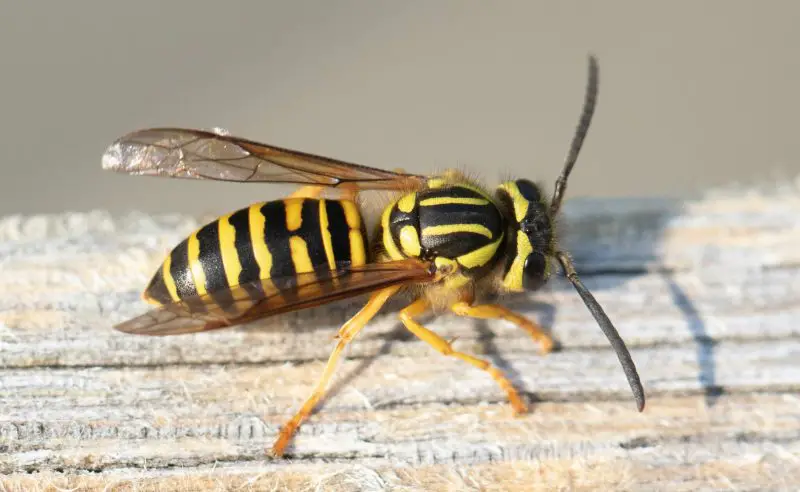
Yellowjackets are among the most aggressive stinging insects in Minnesota, easily recognized by their bright black and yellow striped bodies and compact, wasp-like shape. Adults measure about 12 to 16 millimeters long and have smooth, shiny exoskeletons. They are fast fliers and are often mistaken for bees, though they lack hair and have more defined waists.
These social wasps construct large paper nests underground, inside wall voids, or beneath logs. Their colonies can number thousands of individuals by late summer, making them especially defensive. Yellowjackets are scavengers, feeding on sugary substances, meats, and carrion, which explains their frequent presence at outdoor picnics and garbage bins.
When disturbed, they attack in swarms and can sting multiple times without losing their stinger. Their venom contains a potent mix of allergens that cause severe burning pain, itching, and swelling. In sensitive individuals, stings can induce systemic allergic reactions or even life-threatening anaphylaxis. Yellowjackets are also known to chase intruders over long distances once provoked.
In Minnesota, yellowjackets are widespread and particularly abundant during late summer and early fall when natural food sources decline. They thrive in both urban and rural settings, especially around picnic areas, parks, and homes. Keeping food covered outdoors and sealing trash containers can greatly reduce unwanted encounters with these aggressive wasps.
Horse Fly (Tabanus spp.)
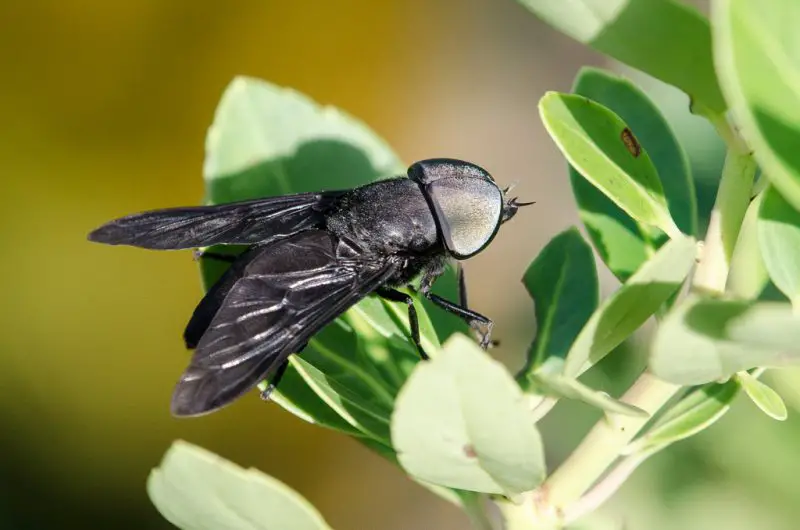
Horse Flies are large, stout-bodied insects belonging to the genus Tabanus, well known for their powerful bites. Females, which do the biting, measure between 10 to 25 millimeters in length and are equipped with scissor-like mouthparts that cut through skin to draw blood. Their bodies are typically gray or brown with large, iridescent green or gold eyes that aid in detecting movement.
They are strong fliers that frequent open fields, lakeshores, and wooded areas in Minnesota, especially during midsummer. Females require blood meals for egg production and target both humans and large mammals like horses, cattle, and deer. Males, in contrast, feed solely on nectar and plant juices. The bites are not only painful but also capable of causing bleeding and itching that can persist for several days.
Because their mouthparts slice rather than pierce the skin, horse fly bites are particularly traumatic and can lead to secondary infections if scratched. Though they are not major disease vectors in Minnesota, their bites can still transmit certain pathogens to livestock, impacting agricultural productivity.
Horse Flies are most common near water bodies and farmlands in Minnesota, where they breed in moist soil or decaying vegetation. They are most active during hot, sunny days and are attracted to movement and dark colors. Avoiding infested areas, wearing light clothing, and using repellents are effective ways to minimize bites.
Deer Fly (Chrysops spp.)
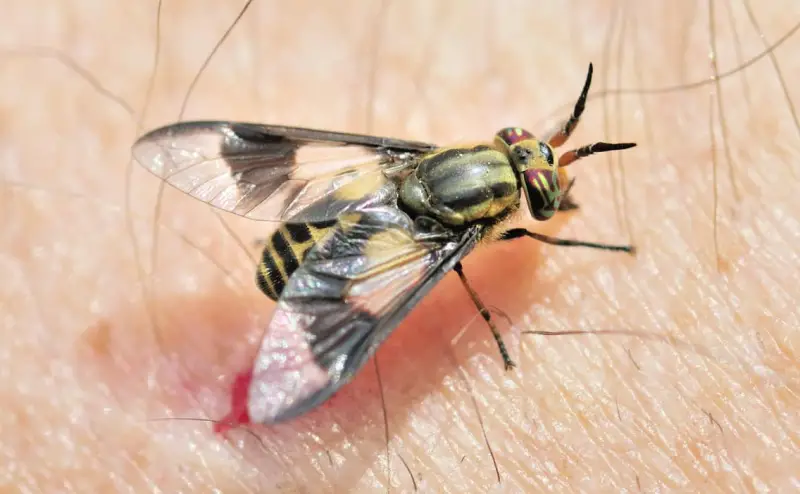
Deer Flies, belonging to the genus Chrysops, are smaller relatives of horse flies but equally aggressive in their biting behavior. Adults range from 6 to 12 millimeters long and are characterized by their bright patterned wings, yellow or black striped bodies, and large compound eyes that often shimmer in metallic hues. These flies are a notorious nuisance in Minnesota’s summer months, especially near wetlands and wooded trails.
Female Deer Flies are relentless feeders that target humans, pets, and wildlife to obtain the blood meals necessary for egg development. Their bites are sharp and immediately painful, leaving behind raised welts that itch and sometimes bleed. The wound can become infected if not properly cleaned. Male Deer Flies, on the other hand, feed only on nectar and do not bite.
Deer Flies are also known vectors of Francisella tularensis, the bacterium responsible for tularemia—a potentially serious zoonotic disease affecting humans and animals. Infections can cause fever, skin ulcers, and swollen lymph nodes, particularly when bites occur near infected wildlife habitats.
In Minnesota, Deer Flies are most active from June to August in areas with abundant moisture, such as riverbanks, marshes, and forest edges. They are daytime feeders attracted to motion, heat, and dark-colored clothing. Wearing hats with netting, using insect repellents, and avoiding peak biting hours can help reduce the risk of painful encounters.
Assassin Bug (Reduvius personatus)
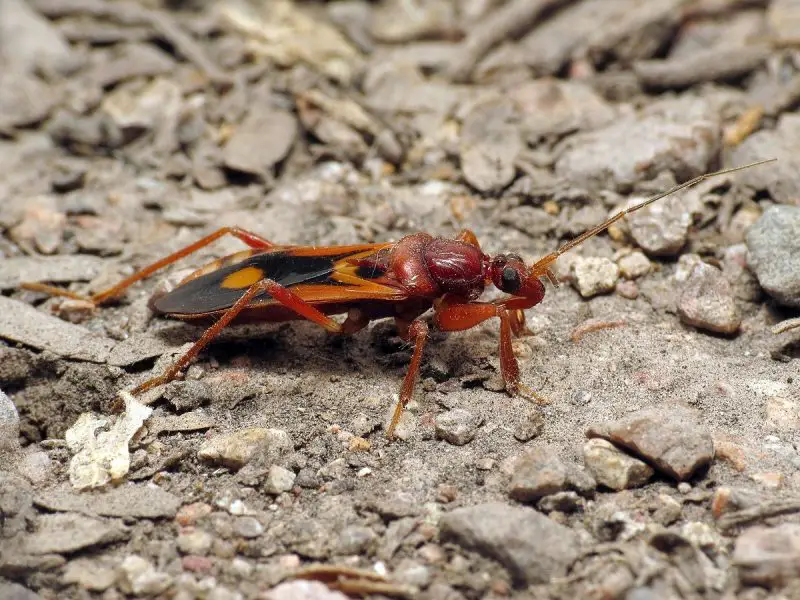
The Assassin Bug, Reduvius personatus, also known as the Masked Hunter, is a predatory insect that belongs to the Reduviidae family. Adults grow up to 17 millimeters long and have elongated, dark brown or black bodies with narrow heads and prominent, curved beaks. The nymphs are known for covering themselves in dust and debris, a camouflage tactic that helps them blend into their surroundings—hence the nickname “masked hunter.”
These insects are beneficial predators that feed on household pests such as bed bugs, ants, and other small arthropods. They use their strong, piercing mouthparts to inject a toxic saliva that liquefies the insides of their prey for easy consumption. While they are not aggressive toward humans, Assassin Bugs can bite defensively when handled or trapped against the skin.
The bite of a Reduvius personatus is extremely painful and often compared to a bee sting. It causes localized redness, swelling, and burning that may persist for several days. Though not venomous in the way spiders or scorpions are, the pain can be intense, and the bite is sometimes mistaken for that of a Brown Recluse Spider. Secondary infection is possible if the wound is scratched or not cleaned properly.
In Minnesota, Assassin Bugs are found indoors during cooler months and outdoors in warmer seasons, often inhabiting cracks, crevices, and barns. They are widespread across the state, especially in urban and suburban environments where insect prey is abundant. Despite their occasional bites, these insects play a valuable ecological role in keeping pest populations under control.
Wheel Bug (Arilus cristatus)
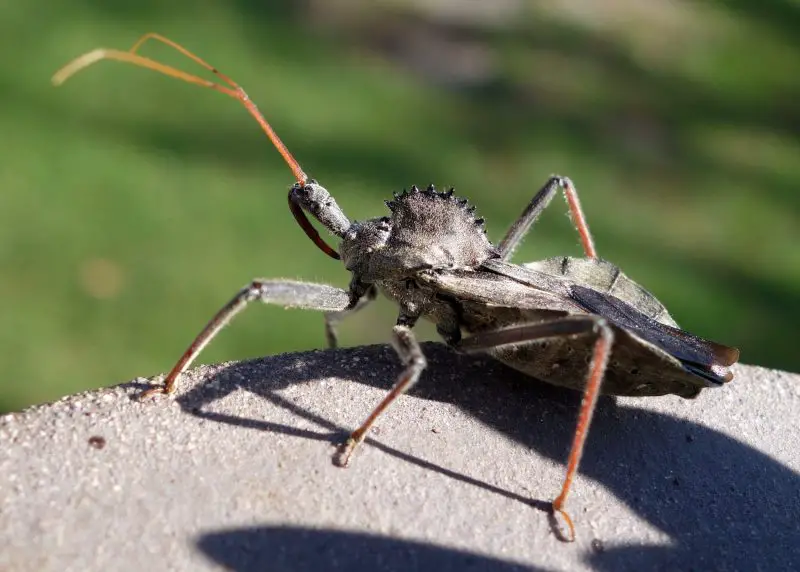
The Wheel Bug, Arilus cristatus, is a large and formidable member of the assassin bug family, easily recognized by the prominent cogwheel-like crest on its thorax. Adults measure between 25 to 38 millimeters long, making them one of the largest true bugs in North America. Their grayish-brown bodies, long legs, and curved, dagger-like beak give them a prehistoric, armored appearance. The wheel-shaped ridge on their back is their most defining characteristic and serves as a defensive structure.
Wheel Bugs are ambush predators that feed on caterpillars, beetles, grasshoppers, and other soft-bodied insects. They use their sharp proboscis to inject a potent enzyme that paralyzes and digests their prey from within. While beneficial to gardens and crops due to their pest control role, they can become a painful hazard when accidentally handled. Their bite is not venomous to humans but causes immediate burning pain that may last for several days.
The reaction to a Wheel Bug bite often includes redness, swelling, and sometimes numbness or blistering around the affected area. In some cases, localized tissue necrosis can occur. These bugs are slow-moving and non-aggressive, but their defensive strike is swift and strong when threatened. Medical attention may be necessary for severe reactions, especially in sensitive individuals.
In Minnesota, Wheel Bugs are occasionally found in the southern and central parts of the state, particularly during late summer and early autumn. They inhabit wooded areas, gardens, and fields, where prey insects are abundant. Observing them from a distance is recommended, as even gentle contact can provoke a painful bite.
Blister Beetle (Epicauta pennsylvanica)
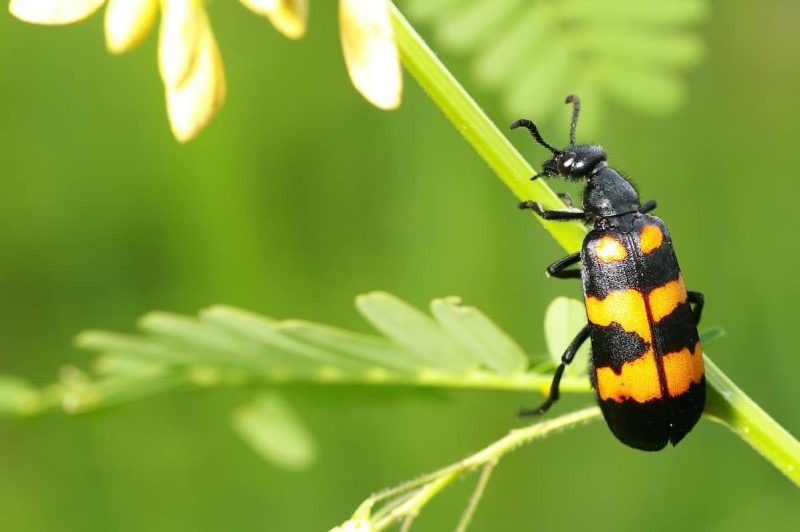
The Blister Beetle, Epicauta pennsylvanica, is a slender, soft-bodied beetle ranging from 10 to 20 millimeters in length. It is typically black or dark gray with a velvety texture and a narrow thorax that gives it a distinct elongated look. When disturbed or crushed, this beetle secretes a potent chemical called cantharidin—a blistering agent that causes the skin to burn and form painful blisters upon contact.
These beetles are active during the summer and often found in meadows, gardens, and fields across Minnesota. Adults feed on flowering plants such as alfalfa, potatoes, and clover, while their larvae are beneficial because they prey on grasshopper eggs. Despite their ecological benefits, direct contact with Blister Beetles poses a serious health risk due to the cantharidin they excrete as a defense mechanism.
Cantharidin exposure results in irritation, redness, and fluid-filled blisters that can last several days. Crushing a Blister Beetle against the skin worsens the reaction by releasing more toxin. If ingested—often accidentally through contaminated hay—it can cause severe poisoning in livestock, particularly horses. For humans, washing affected skin immediately is essential to prevent further irritation.
In Minnesota, Epicauta pennsylvanica is widespread in open areas, particularly agricultural regions and grasslands. They are most visible from late June through early fall. Avoiding direct handling and wearing gloves during fieldwork are the best ways to prevent painful blistering or accidental exposure to cantharidin.
Asian Giant Hornet (Vespa mandarinia)
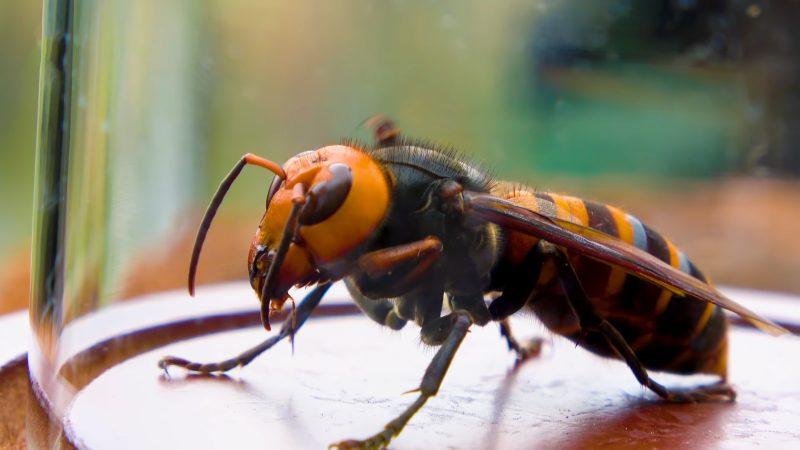
The Asian Giant Hornet, Vespa mandarinia, often sensationalized as the “murder hornet,” is the largest hornet species in the world, with queens reaching up to 5 centimeters in length. It has a massive orange head, large black eyes, and a striped yellow-and-brown abdomen. Though native to East Asia, isolated sightings in North America have raised concerns about its potential establishment, including rare, unconfirmed reports in Minnesota.
These hornets are powerful predators that primarily feed on honeybees, other hornets, and large insects. Their stingers are long enough to penetrate thick clothing, and they can deliver multiple stings without losing the stinger. The venom they inject is highly potent, containing a mixture of neurotoxins and tissue-damaging compounds. Stings cause immediate, excruciating pain, followed by swelling, redness, and in some cases, systemic allergic reactions.
Multiple stings from an Asian Giant Hornet can lead to anaphylactic shock, kidney failure, or even death in extreme cases, particularly for those allergic to insect venom. While they rarely attack humans unprovoked, they become extremely aggressive when defending their nests. Their size, buzzing sound, and speed make them an intimidating presence in the wild.
In Minnesota, there are currently no established populations of Vespa mandarinia, but environmental officials monitor the situation closely to prevent invasive spread. Potential habitats include wooded or mountainous regions with abundant insect prey. Residents should report any unusually large hornets to state authorities for proper identification rather than attempting to capture or kill them.
Fire Ant (Solenopsis invicta)
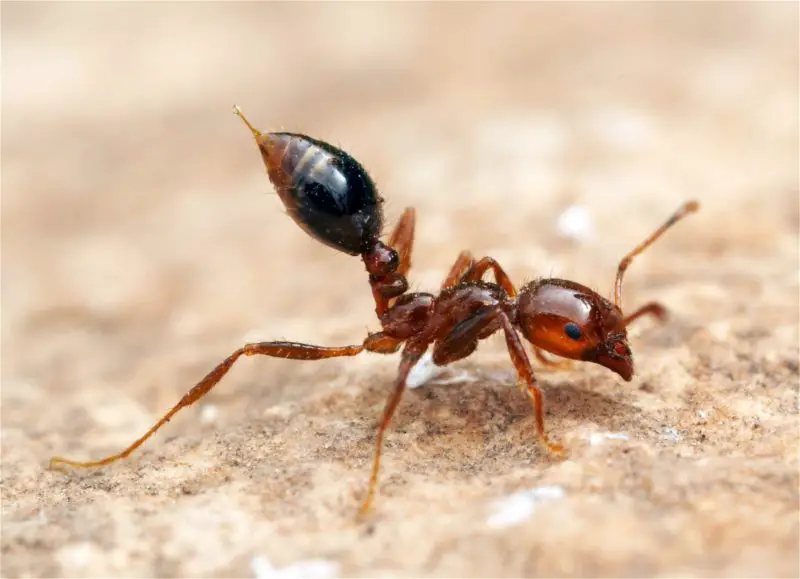
The Fire Ant, Solenopsis invicta, is a small but notoriously aggressive ant species measuring about 2 to 6 millimeters long. They have reddish-brown bodies with darker abdomens and are easily recognized by their mound-like nests built in soil, lawns, and pastures. Though native to South America, isolated colonies have been reported in southern Minnesota due to accidental transport through plant or soil shipments.
Fire Ants are social insects that form massive colonies containing thousands of workers and multiple queens. When disturbed, they swarm aggressively, biting and stinging simultaneously. Their sting injects a venom containing alkaloids that produce intense burning sensations, which is how they earned their name. Within hours, the stings develop into itchy pustules that can become infected if scratched.
For sensitive individuals, multiple stings can cause systemic allergic reactions or anaphylaxis, requiring immediate medical attention. Even those without allergies often experience significant discomfort, swelling, and pain that lasts for days. Fire Ants are also a danger to pets and livestock, as large attacks can be overwhelming.
In Minnesota, confirmed Fire Ant colonies are extremely rare and usually short-lived due to the state’s cold winters. However, warmer summers and climate change increase the risk of temporary infestations. Most sightings occur in imported landscaping materials or potted plants. Early detection and professional extermination are essential to prevent these invasive insects from spreading further north.
Bed Bug (Cimex lectularius)
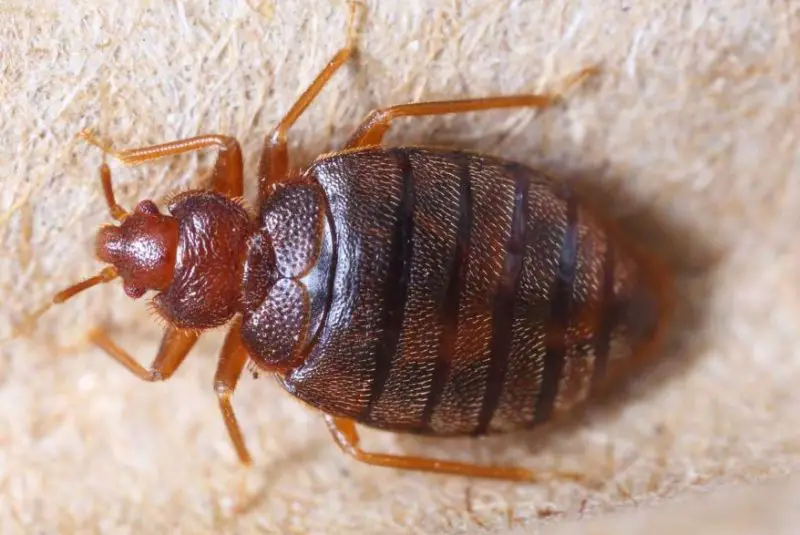
The Bed Bug, Cimex lectularius, is a small, reddish-brown insect measuring about 5 to 7 millimeters long. It has a flattened, oval body that swells and darkens after feeding on blood. Although wingless, bed bugs are excellent crawlers and hide in mattress seams, furniture, and cracks during the day, emerging at night to feed on humans while they sleep.
Bed Bugs are not known to transmit diseases, but their bites cause itchy, red welts that often appear in clusters or lines. The reaction varies among individuals—some experience mild irritation, while others suffer intense itching and inflammation. Heavy infestations can cause significant psychological stress and insomnia, as well as allergic reactions in sensitive individuals.
Their ability to reproduce quickly and hide in small spaces makes infestations extremely difficult to control. Female bed bugs can lay hundreds of eggs during their lifetime, allowing populations to multiply rapidly. Once established, they spread through clothing, luggage, and furniture, moving easily between rooms and even neighboring apartments.
In Minnesota, bed bugs are found throughout the state, particularly in densely populated areas such as Minneapolis and St. Paul. They are most active during the warmer months but can survive year-round indoors. Regular inspection of bedding, using mattress covers, and professional pest control treatments are crucial for preventing and eliminating infestations.
Kissing Bug (Triatoma sanguisuga)
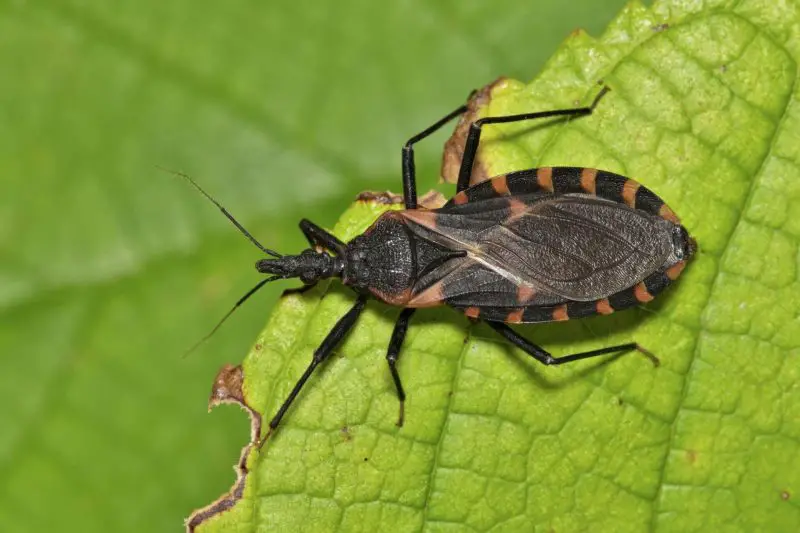
The Kissing Bug, Triatoma sanguisuga, is an elongated, flat-bodied insect measuring about 18 to 27 millimeters long, with dark brown or black coloration and orange or red bands along the edges of its abdomen. These nocturnal insects are part of the assassin bug family and feed exclusively on the blood of mammals, including humans. They are sometimes called “conenose bugs” due to their pointed head and long, piercing beak.
While rare in Minnesota, Kissing Bugs occasionally enter homes during summer months, attracted by lights or the presence of warm-blooded hosts. They typically hide during the day in cracks, bedding, or behind furniture, emerging at night to feed. Their bites are usually painless at first but often cause redness, swelling, and localized itching. Some individuals may experience allergic reactions or secondary infections from scratching the bite site.
The greatest danger associated with Triatoma sanguisuga lies in its potential to transmit Trypanosoma cruzi, the parasite that causes Chagas disease. However, cases of transmission in Minnesota are virtually nonexistent since the bug’s feces—where the parasite resides—are not typically introduced into bite wounds under local conditions. Still, travelers from endemic areas should remain cautious.
In Minnesota, Kissing Bugs are most likely to appear in southern regions and around rural homes, particularly during warmer months. Sealing entry points, reducing outdoor lighting, and inspecting bedding or walls can help prevent indoor infestations. While their presence is concerning, they remain an uncommon encounter in the state.
Giant Water Bug (Lethocerus americanus)
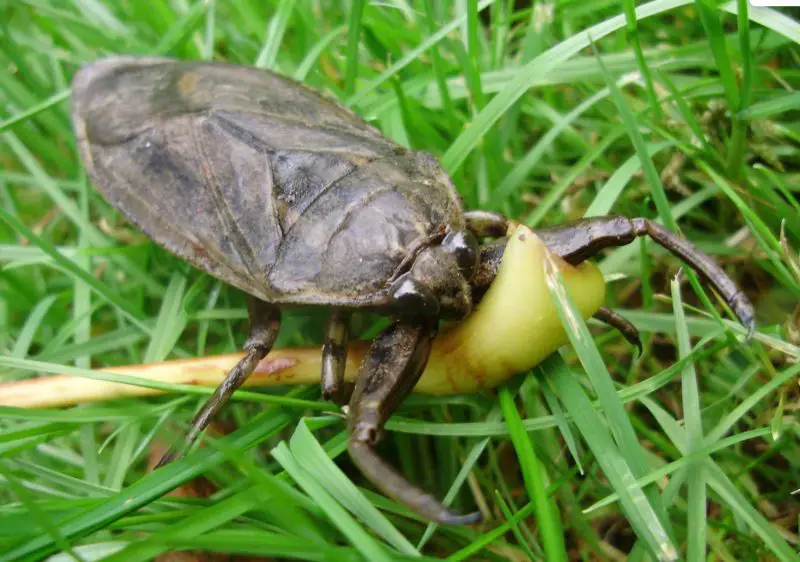
The Giant Water Bug, Lethocerus americanus, is one of the largest aquatic insects in Minnesota, reaching lengths of up to 6 centimeters. Its flat, oval body is brown or gray, camouflaging perfectly with pond or lake bottoms. These formidable predators possess raptorial front legs for grasping prey and a sharp, beak-like mouthpart used to inject digestive enzymes into fish, tadpoles, and aquatic insects.
Nicknamed “toe-biters,” these insects are infamous for the powerful and painful bites they deliver when handled or stepped on. Their bite causes immediate burning pain, redness, and swelling that can last several hours. Though not venomous, the intense discomfort is enough to cause panic in swimmers who encounter them unexpectedly. Fortunately, the bite does not result in long-term harm or disease transmission.
Giant Water Bugs are strong fliers and are often attracted to bright outdoor lights at night, sometimes landing on patios or buildings near lakes and ponds. During the day, they reside in still or slow-moving freshwater habitats, where they remain motionless, waiting to ambush prey. Despite their intimidating appearance, they play a beneficial ecological role as natural predators that help control mosquito larvae and other aquatic pests.
In Minnesota, Lethocerus americanus is widespread across lakes, marshes, and ponds throughout the state, especially during summer. People are most likely to encounter them near shorelines or docks at dusk. To avoid bites, it’s best to handle them with caution—or not at all.
Bumblebee (Bombus impatiens)
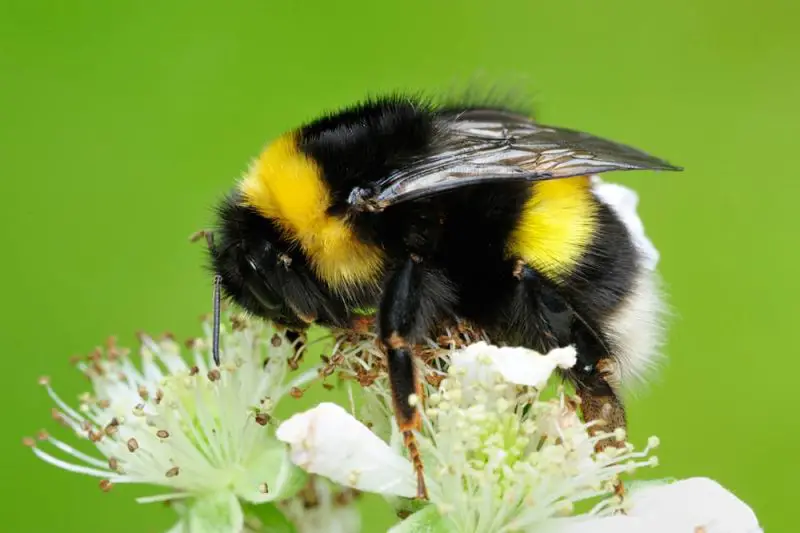
The Bumblebee, Bombus impatiens, is a large, fuzzy insect with a robust black body covered in yellow and black bands. Workers typically measure 10 to 15 millimeters, while queens can exceed 20 millimeters in length. Their dense body hair helps them collect pollen efficiently, making them one of Minnesota’s most valuable pollinators for wildflowers and crops alike.
Bumblebees are social insects that form small colonies in underground burrows or abandoned rodent holes. They are usually gentle and non-aggressive, stinging only when their nest is threatened or when trapped against the skin. Their sting causes sharp pain, swelling, and redness, though it is less severe than that of hornets or yellowjackets. However, multiple stings or allergic reactions can result in more serious symptoms, including difficulty breathing or hives.
These bees are highly active during spring and summer, particularly in meadows, gardens, and wooded edges where flowering plants are abundant. They are critical for the pollination of tomatoes, blueberries, and clover. After stinging, a bumblebee can sting again—unlike honeybees, which lose their stinger after one sting.
In Minnesota, Bombus impatiens and related species are found statewide, from rural farmlands to suburban gardens. Maintaining pollinator-friendly habitats with native plants and avoiding pesticide use can support healthy bumblebee populations while minimizing risk to humans. Observing them calmly from a distance is the safest way to appreciate their importance.
Carpenter Bee (Xylocopa virginica)
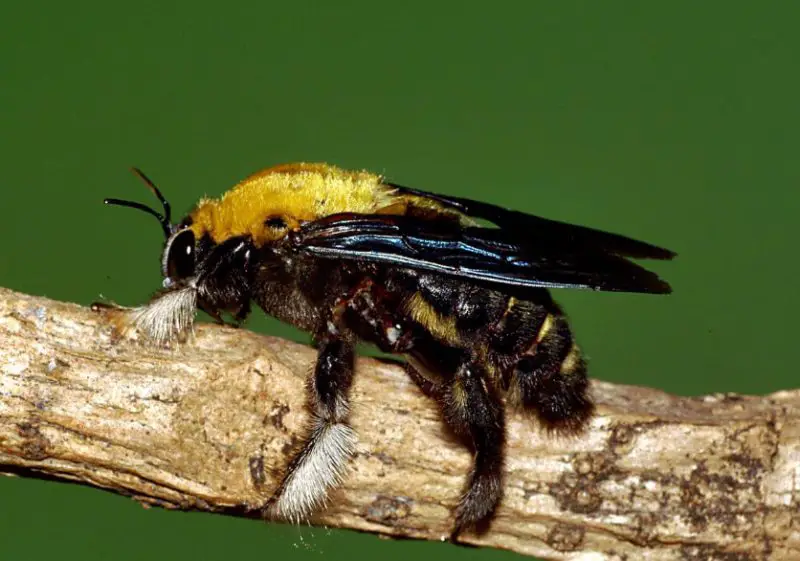
The Carpenter Bee, Xylocopa virginica, resembles the bumblebee but can be distinguished by its shiny, hairless black abdomen. Adults measure about 19 to 25 millimeters in length, making them one of the largest bees found in Minnesota. They are strong fliers and often seen hovering near wooden decks, fences, or eaves where they excavate tunnels to lay eggs.
Unlike bumblebees, Carpenter Bees are solitary, with females responsible for constructing and guarding their nests. They bore perfectly round holes into untreated or weathered wood, which can cause cosmetic damage to structures over time. While males often buzz aggressively to defend their territory, they are harmless since they lack stingers. Females, however, can sting if provoked but rarely do unless directly threatened.
Their sting causes localized pain, redness, and mild swelling, similar to other bee stings. Repeated infestations can weaken wooden structures, making them a nuisance for homeowners. However, Carpenter Bees also play an important ecological role as pollinators for open-faced flowers such as morning glories and passionflowers.
In Minnesota, Xylocopa virginica is most common in the southern and central regions, especially in suburban areas with plenty of wooden structures. To deter nesting, homeowners can paint or varnish exposed wood and use insect-resistant building materials. Regular inspection and maintenance can help prevent structural damage from repeated nesting activity.
Flea (Ctenocephalides felis)
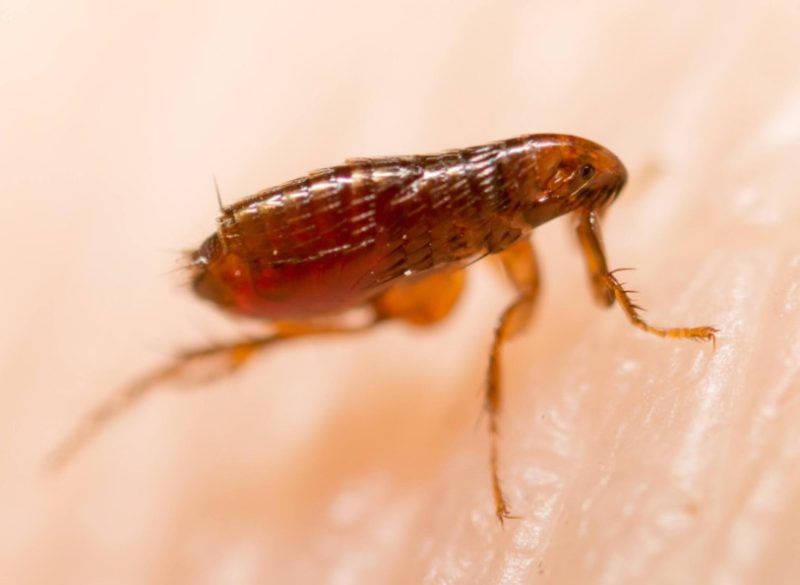
The Cat Flea, Ctenocephalides felis, is a tiny, wingless insect about 2 to 3 millimeters long, with a laterally flattened body and strong legs adapted for jumping. Despite its name, this flea species infests not only cats but also dogs, wildlife, and occasionally humans. Its reddish-brown body is covered with bristles that help it move efficiently through fur and hair.
Fleas feed exclusively on blood, using their piercing mouthparts to bite and draw blood from their hosts. Their bites cause small, red bumps surrounded by itchy halos, typically around the ankles or lower legs in humans. In pets, infestations lead to scratching, hair loss, and skin irritation. Severe infestations can result in anemia in young or small animals.
Aside from irritation, Ctenocephalides felis can transmit tapeworms (Dipylidium caninum) and bacterial infections such as Bartonella henselae, which causes cat scratch disease. They reproduce rapidly, with a single female capable of laying hundreds of eggs that fall into carpets and bedding, allowing infestations to spread quickly indoors.
In Minnesota, fleas are most active from spring through early fall but can survive indoors year-round due to heated environments. Regular pet treatments, frequent vacuuming, and washing bedding are crucial for controlling infestations. Early intervention prevents large-scale outbreaks and protects both humans and animals from discomfort and disease.
Stink Bug (Halyomorpha halys)
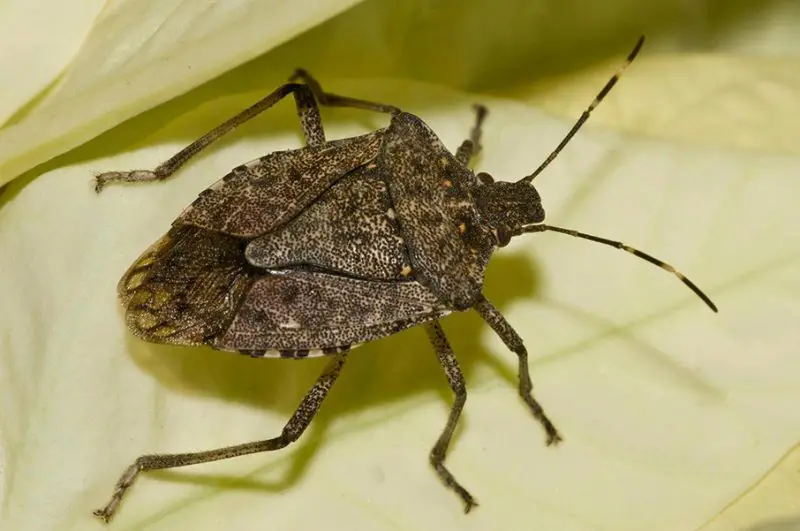
The Brown Marmorated Stink Bug, Halyomorpha halys, is an invasive species that has spread widely across Minnesota in recent years. Adults are about 12 to 17 millimeters long with a shield-shaped body mottled in brown and gray. Their distinguishing features include alternating dark and light bands on the antennae and edges of the abdomen.
Although they do not bite or sting, Stink Bugs emit a strong, unpleasant odor when threatened or crushed. This smell is produced by glands on their abdomen and serves as a defense mechanism against predators. For humans, the odor can trigger mild respiratory irritation or allergic reactions, particularly in sensitive individuals. Additionally, crushed bugs can stain fabrics, walls, and furniture.
Stink Bugs are primarily agricultural pests that feed on fruits, vegetables, and ornamental plants by piercing them with needle-like mouthparts. Their feeding causes discolored spots and deformities in produce, leading to significant crop losses. During the cooler months, they often seek shelter indoors, clustering in walls, attics, or windowsills.
In Minnesota, Halyomorpha halys is now common throughout the state, especially in agricultural regions and residential areas. They are most noticeable in late summer and fall when adults seek overwintering sites. Sealing entry points and vacuuming intruders instead of crushing them are the most effective ways to manage these odor-producing invaders.
Velvet Ant (Dasymutilla occidentalis)
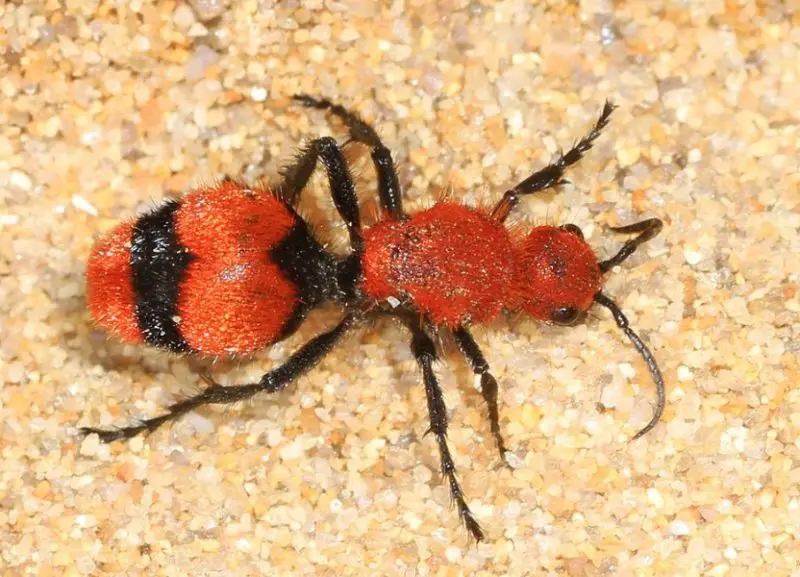
Despite its name, the velvet ant is actually a wingless female wasp, not an ant. It’s covered in bright orange-red hair, warning predators of its potent sting. Sometimes called the “cow killer ant,” this insect delivers one of the most painful stings of any wasp species in North America.
Velvet ants are most often found in sandy or grassy areas, especially around open fields and forest edges. They move quickly across the ground, searching for bee or wasp nests to lay eggs in. While they don’t attack unless provoked, stepping on or handling one can result in an excruciating sting.
Although their venom is not deadly, the pain can last for hours and may cause redness, swelling, and burning sensations. It’s best to observe these colorful insects from a distance and avoid touching them under any circumstances.
Tsetse Fly (Glossina spp.)
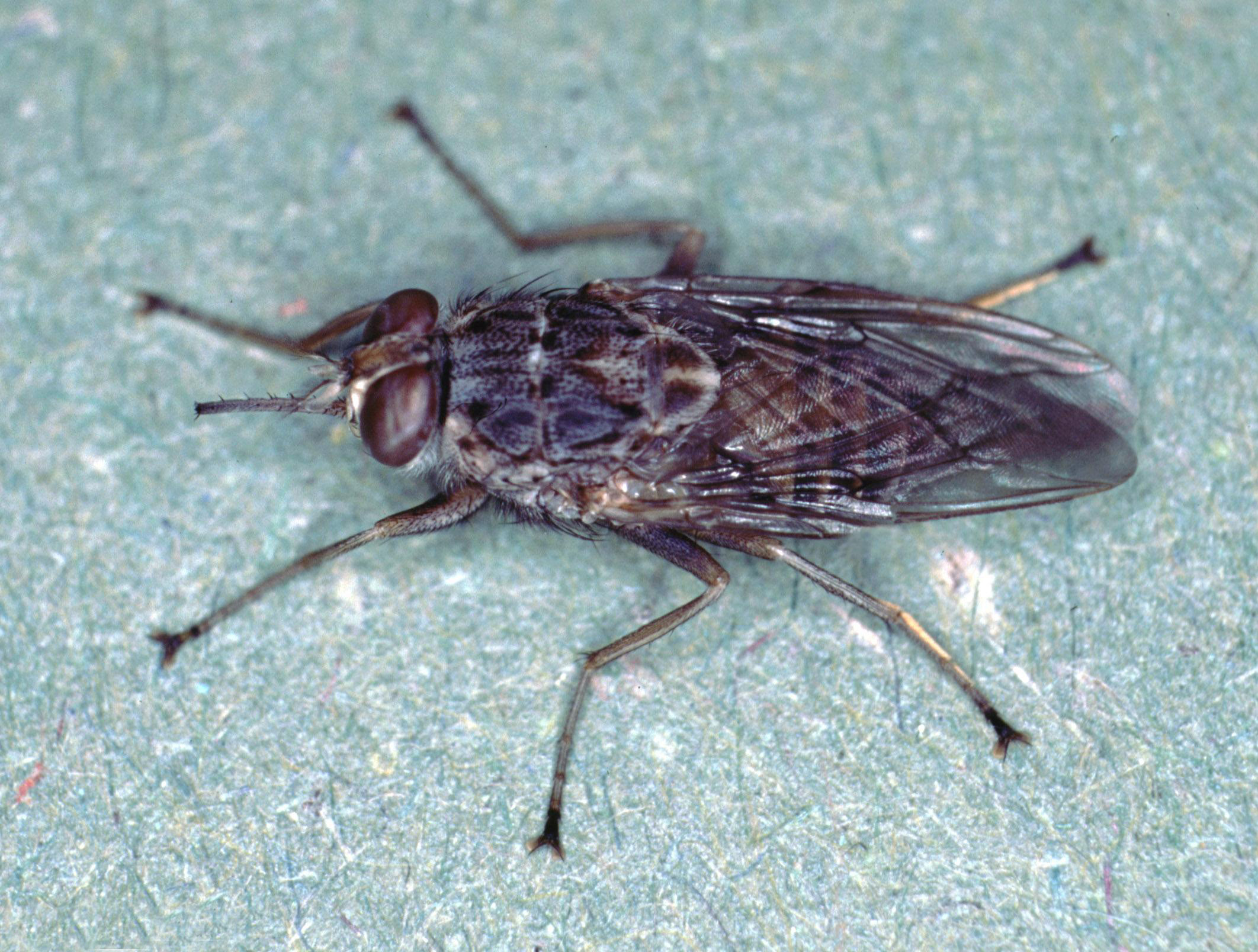
While extremely rare in Minnesota, occasional imported or lab specimens can appear through travel or research. The tsetse fly is infamous globally for transmitting trypanosomiasis, also known as sleeping sickness, in Africa — but local relatives, such as biting stable flies, cause painful bites that draw blood and may become infected.
These flies resemble large houseflies but with a distinct long proboscis for piercing skin. They are most active during warm, humid conditions and are drawn to movement and dark clothing. Even though they are not permanent residents in Minnesota, their close relatives cause discomfort to both humans and livestock.
To prevent bites from biting flies, wear light-colored clothing and use insect repellents when near lakes, stables, or wet meadows. Avoid standing water and decaying organic matter, which attract fly populations.
Tips to Stay Safe from Dangerous Bugs in Minnesota
1. Wear Protective Clothing Outdoors
When exploring Minnesota’s trails or wooded regions, wear long sleeves, pants, and closed shoes to limit skin exposure. Light-colored fabrics make it easier to spot ticks and biting insects. Always tuck your pants into your socks and shirts into your pants to reduce entry points for crawling bugs.
2. Apply Insect Repellent Properly
Use repellents that contain DEET, picaridin, or oil of lemon eucalyptus to protect against mosquitoes and ticks. Reapply every few hours, especially when sweating or swimming. For clothing and gear, consider using permethrin spray to provide extra protection from bites.
3. Check for Ticks After Outdoor Activities
Ticks are common in wooded areas and grassy trails. After spending time outdoors, inspect your scalp, armpits, waist, and behind the knees. Removing a tick within 24 hours significantly reduces the risk of contracting Lyme disease or anaplasmosis.
4. Keep Outdoor Spaces Clean and Dry
Mosquitoes and flies breed in standing water. Empty buckets, birdbaths, and flowerpots regularly. Trim vegetation near your home and maintain clean gutters to eliminate insect nesting sites. Proper lawn care helps reduce both tick and mosquito populations.
5. Avoid Disturbing Insect Nests
Wasps, hornets, and bees defend their colonies aggressively. If you notice a nest near your home, keep your distance and avoid vibrations or sudden movements. Contact a pest control expert for safe removal instead of attempting to handle it yourself.
6. Protect Pets from Fleas and Ticks
Minnesota’s wildlife can easily transmit fleas and ticks to household pets. Use veterinarian-approved preventatives and check your pets frequently, especially after outdoor walks. Wash pet bedding and vacuum carpets regularly to reduce infestations.
7. Seal Entry Points in Your Home
Cracks, vents, and window gaps allow insects to enter easily. Use caulk or weatherstripping to seal openings, install mesh screens, and fix broken seals. Keeping your home tightly sealed helps block bugs like spiders, stink bugs, and ants.
8. Avoid Strong Scents and Bright Colors
Stinging insects such as bees and wasps are attracted to floral perfumes and bright clothing. Choose neutral-colored clothing and fragrance-free lotions when spending time outside during summer months.
9. Use Natural Deterrents When Possible
Plants like citronella, lavender, basil, and marigold act as natural insect repellents. You can grow them around patios or windows to discourage mosquitoes and flies. Essential oils like tea tree or peppermint also work as natural pest barriers.
10. Be Cautious Around Lights at Night
Many insects, including giant water bugs and moths, are drawn to bright lights. Replace outdoor bulbs with yellow LED bulbs or motion-sensor lighting to minimize insect attraction during nighttime.
FAQs About Dangerous Bugs in Minnesota
What is the most dangerous bug in Minnesota?
The deer tick (black-legged tick) is considered the most dangerous bug in Minnesota because it can transmit Lyme disease, babesiosis, and anaplasmosis. These ticks are active even during mild winter days and prefer humid, shaded habitats like forest floors and grassy areas.
Do brown recluse spiders live in Minnesota?
While brown recluse spiders are not native, they have occasionally been found in southern Minnesota due to transport from other states. They prefer dark, undisturbed places such as basements, closets, and storage boxes. A bite may cause skin necrosis and should be treated by a medical professional immediately.
When are mosquitoes most active in Minnesota?
Mosquito activity peaks between June and August, especially after heavy rainfall or in areas near standing water. During this period, mosquitoes are most active at dawn and dusk, so using repellent and wearing long clothing is essential when outdoors.
How can I reduce wasps and hornets around my home?
To deter wasps and hornets, keep garbage bins tightly sealed, remove fallen fruit, and clean up food spills quickly. Hanging decoy nests can discourage new colonies from forming nearby. For large or hidden nests, professional pest removal is the safest solution.
Are kissing bugs found in Minnesota?
Kissing bugs are extremely rare in Minnesota, but isolated cases can occur. While they can carry Chagas disease in tropical regions, Minnesota’s colder climate prevents their widespread survival. Their bites, however, can still cause allergic swelling and discomfort.
Can giant water bugs hurt humans?
Yes. Also known as toe-biters, giant water bugs deliver a painful bite with their sharp mouthparts when handled. Though not venomous, the bite can cause swelling and tenderness for several hours. They are commonly found near ponds, lakes, and streetlights at night.
How can I protect my home from fleas and bed bugs?
Vacuum frequently, wash bedding in hot water, and treat pets with flea control products. If an infestation occurs, use heat treatments or contact a licensed exterminator. Preventive cleaning and pet hygiene are key to avoiding recurring infestations.
Do stink bugs bite or sting?
Stink bugs do not bite or sting, but they release a foul odor when crushed or disturbed. Some people may experience mild respiratory irritation or skin reactions to the odor. The best approach is to vacuum them up and discard them outdoors.
Are fire ants found in Minnesota?
Fire ants are not widespread in Minnesota, but isolated colonies have occasionally been reported in southern regions. Their stings cause a burning sensation and pustules on the skin. If you are stung multiple times, seek medical attention for allergic reactions.
What should I do if bitten by a tick or spider?
Remove ticks carefully using fine-tipped tweezers and clean the area with antiseptic. Monitor for symptoms like fever, rash, or fatigue for several weeks. For spider bites, wash the wound, apply ice, and seek medical help if swelling or pain increases.

